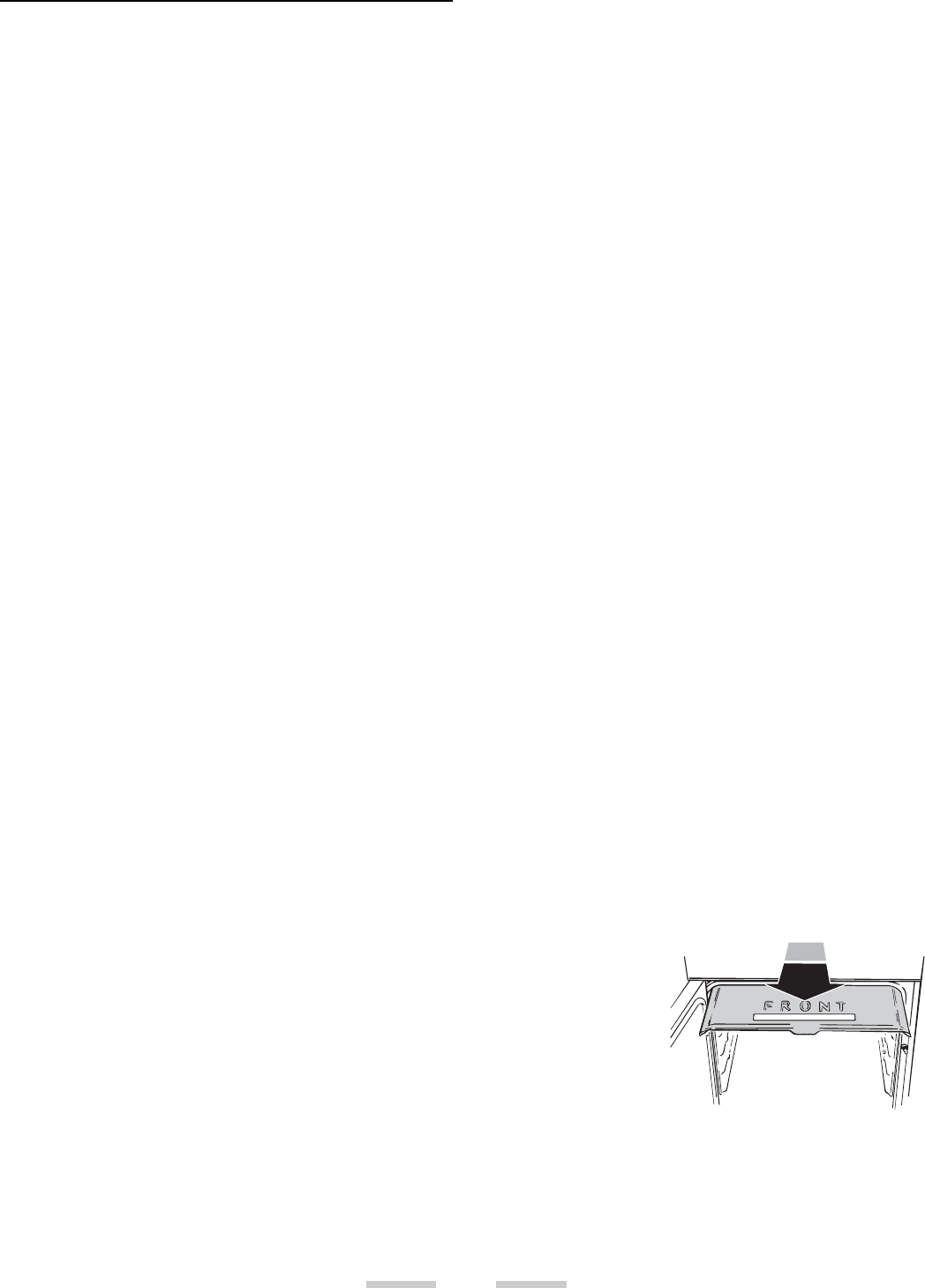
14
Cleaning your cooker
Essential information
Before thorough cleaning isolate the electricity
supply. Remember to switch on the electricity
supply before use.
Never use paint solvents, washing soda,
caustic cleaners, biological powders,
bleach, chlorine based bleach cleaners,
coarse abrasives or salt. Don’t mix
different cleaning products - they may
react together with hazardous results.
Recommended cleaning materials are
shown in the table at the end of this
section.
If you want to move your cooker for cleaning,
see the section called ‘Moving your cooker’.
All parts of the cooker can be cleaned with hot
soapy water - but take care that no surplus
water seeps into the appliance.
For cleaning materials see the ‘Cleaning Table’
opposite.
Hob
If spillage does occur on the hobplates wipe with
a damp cloth then heat up at the lowest setting
until dry. Keep the plates dry and free from
moisture to avoid rust spots.
The Hob Top
Use only a moist slightly soapy cloth and dry
with a soft clean cloth.
DO NOT USE ANY ABRASIVES.
Griddle
Always clean the griddle after use. Allow to
cool completely before removing. Immerse the
griddle plate in hot soapy water. Use a soft
cloth or, for stubborn stains, a nylon washing up
brush.
NEVER USE CAUSTIC OR ABRASIVE
CLEANERS AS THESE WILL DAMAGE THE
SURFACE.
The element under the griddle is hinged and can
be lifted upwards at the front to make removal of
the refl ector easier.
Note:-
ALWAYS REPLACE THE REFLECTOR BEFORE USING THE
GRIDDLE.
Control Panel and Doors
The control panel and control knobs should
only be cleaned with a soft cloth wrung out
in clean hot soapy water - but take care that
no surplus water seeps into the appliance.
Wipe with a clean dampened cloth then polish
with a dry cloth. The oven doors should only be
cleaned with a soft cloth wrung out in clean hot
soapy water.
Grill
The grill pan and grid should be washed in hot
soapy water. After grilling meats or any foods
that soil, leave to soak for a few minutes in the
sink immediately after use. Stubborn particles
may be removed from the grid by using a nylon
brush.
The Ovens
The ovens have panels which have been coated
with a special enamel that partly cleans itself.
This does not stop all marks on the lining, but
helps to reduce the amount of manual cleaning
needed.
The Cook & Clean panels work better above
200°C. If you do most of your cooking below
this temperature, occasionally remove the
panels and wipe with a lint free cloth and
hot soapy water. The panels should then be
dried and replaced and the oven heated at
200°C for about one hour. This will ensure
the Cook & Clean panels are working
effectively.
Don’t use steel wool (Brillo) or any other
materials that will scratch the surface. Don’t use
oven cleaning pads.
Removing the Oven Linings
Some of the lining panels can be removed for
cleaning and for cleaning behind. Remove the
shelves fi rst.
On some models
the right hand
fanned oven has a
removable oven roof
- if fi tted slide the
roof liner forward and
remove.
Each side of the oven is fi xed with four fi xing
screws. You don’t have to remove the screws
to remove the oven linings. Lift each side panel
upwards and they will slide off the screws. Then
pull them forwards.


















